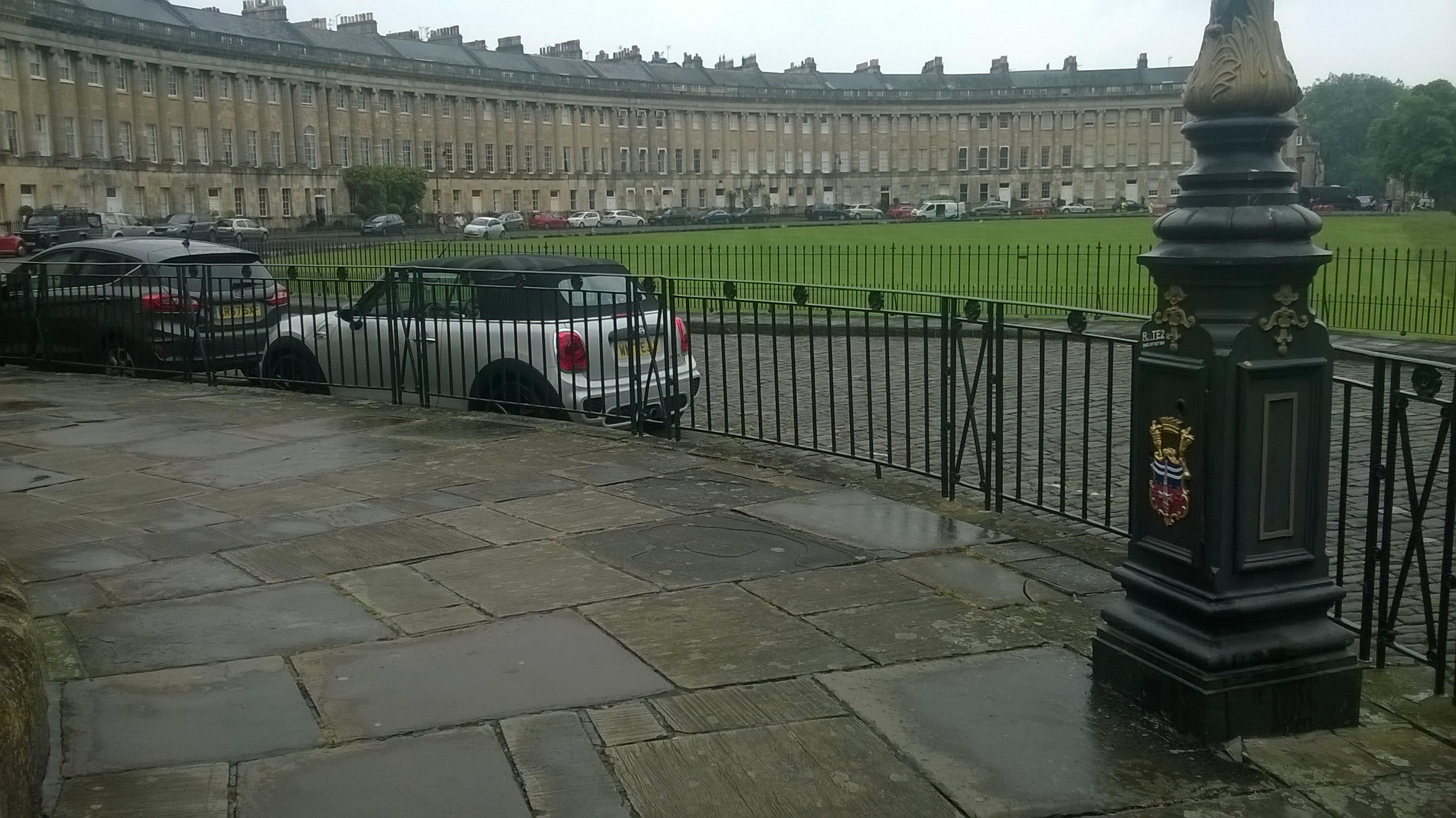We walked out of Wendover at 9.30am.
Emma looked around ‘I don’t think it’s real. The whole place will probably dematerialise when we cross the railway bridge’
‘What do you mean?’
‘Well the information board was upside down’
‘True.. and the people…All larger than life, the ancient waiter and the eccentric landlord.. the disturbance in the bar and the police.. perhaps we were in a game of Cluedo or a late 60s episode of the Avengers’
Wendover disappeared behind us as we turned left and we started the slow trudge up to the Ridgeway.
The wide views again and a monument at the highest vantage point. A large stone structure erected in 1903 in memory of those who died in South Africa during the Boer War.

There are few archaeological sites associated with this conflict but Bath Skyline has Flatford Camp, a military training barracks set up in 1892. It is shown on the 1904 OS map but on no other editions.

Our path took us down through deciduous woodland. The sky overcast, the trees brooding… no dappled light today.
We reached the National Trust property of Pulpit Wood and Grangelands.

Above us, hidden by trees, was a later Bronze Age – earlier Iron Age small hillfort on the brow of Pulpit Hill. Double bank and ditch around its east and north facing edges; univallate to west and south, where the slope of the hill is much steeper. A single clear entrance on eastern side, where the ground is flat. The need to control access along the Ridgeway was clearly important.
‘How are we doing’
‘Average speed 4.6km per hour and we are approaching the 5 miles out from Wendover’
‘Where?, you know, that mirage we stayed in last night’.
Our path followed a row of security posts across a field with some battered signage on each one saying it would be wrong to cross the sign line into the wheat field on our right. It warned of security cameras (It all looked a bit low tech to me). We walked across an entrance drive behind the security gates for Chequers, the Prime Minister’s country retreat. I spotted the great house in the distance.

I thought it was quite British… and understated… that Boris and Biden might screech to a halt to let a couple of Ridgeway walkers pass by before international negotiations.
This is an AONB after all… and barbed wire, searchlights, high fencing and armed soldiers would certainly detract from the aesthetic experience of the National Trail.
Our walking banter was of English sayings. ‘You wouldn’t look a gift horse in the mouth’
‘What’s that mean anyway?
‘It’s linked to ‘Too long in the tooth’
‘Really?’
‘You know… when you buy a horse… you always look in its mouth to see how old they are based on the length of their teeth.’
‘Oh’
11am, we crossed a road and bumped into a public house. Extraordinary! How perfectly timed.
‘Well, you wouldn’t look a gift pub in the barrel, particularly if you just wanted a cup of coffee and one of those nice biscuits’
This was a useful rest as there was a steep climb through woodland after the pub. I said to Emma that it would be a shame if I just went bang. She thought it would be a shame and perhaps a little awkward.
Up, up onto Whiteleaf Hill with a great scenic view over Princes Risbororough beside a mutilated Neolithic earthen long barrow.
There were so many Red Kites. We counted a group of 15 circling (we’d run out so they introduced some from Spain a few years ago….they’ve done everso well).
We walked down towards the town. A little muntjac deer emerged from cover and watched as we passed.
We took an erratic course along a minor road, across two railway lines and a golf course.
Everywhere much quieter on a week day. Just the odd dog walker.
At the crest of another hill, at one o’clock, I checked in with Emma for a progress report.Half way, 8.7 miles, our speed average 4.65km per hour and a miraculous Ridgeway seat appeared. We sat on it to see yet more Red Kites wheeling in the sky.

We were ready to consume the wonders we had picked up in Tesco Express. Ginsters pasties regular and vegan and easy peelers. Today’s top tip is to always buy the best because dehydration when walking is a thing and an easy peeler bursting with clementine juice is a huge jolt after a long morning.
This luxurious lunch break has lulled you into a false sense of security.. because…. in fact.. there was jeopardy pent up and ready to strike as the day progressed towards its end.
Last night, the forecast had been one of continuous rain storms building from the east and the further we got from London…. by late afternoon… the better.
The meander stopped and we did a left onto the Swan Way that headed straight south west for 5 miles carrying us to our destination…. Watlington.
We pressed on… the sky increasingly gloomy. The tunnel under the M40 framed nicely the landscape beyond, then through some woods, and suddenly, a violent commotion as a sausage shaped animal with a black tail-tip leapt across our path to disappear into the undergrowth on the other side. ‘Stoat’ we said… a rare glimpse.

Then it rained and we changed into water proofs and it stopped and we got hot so took them off again and then it rained properly….so they went back on…. as we left the path and walked the mile into Wattlington. Emma googled the pub….. it was closed… but there was a note on the door directing us to our rooms. Phew, we had made it.

























